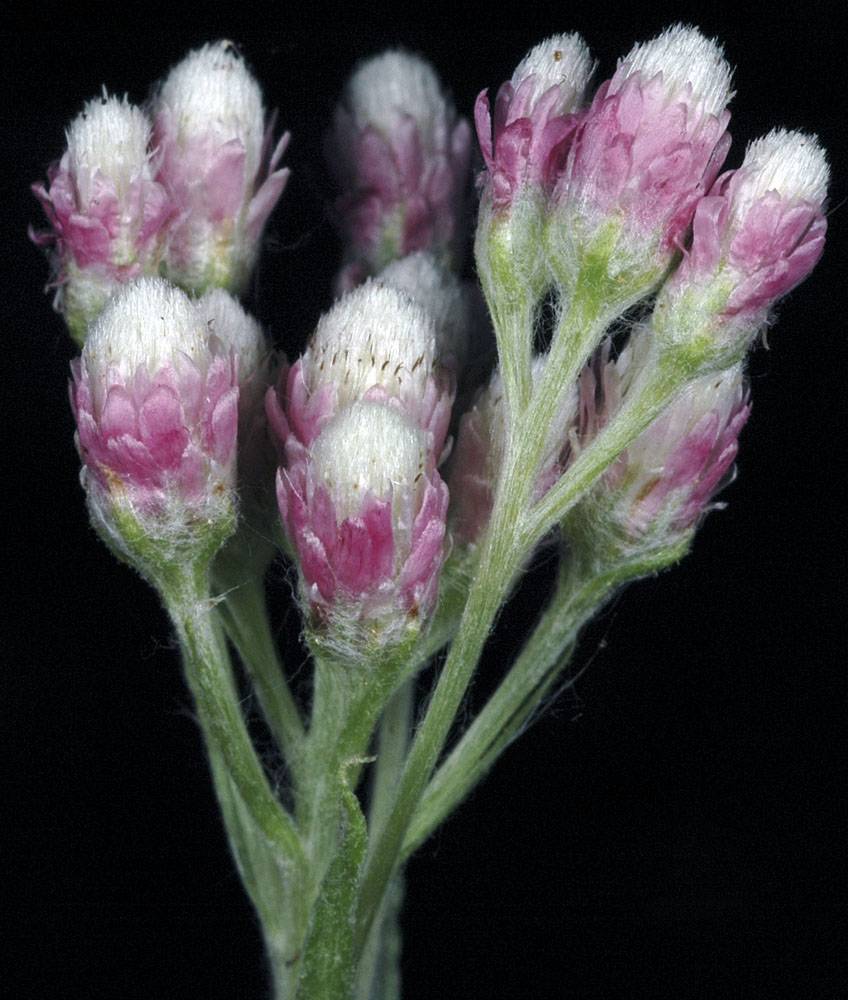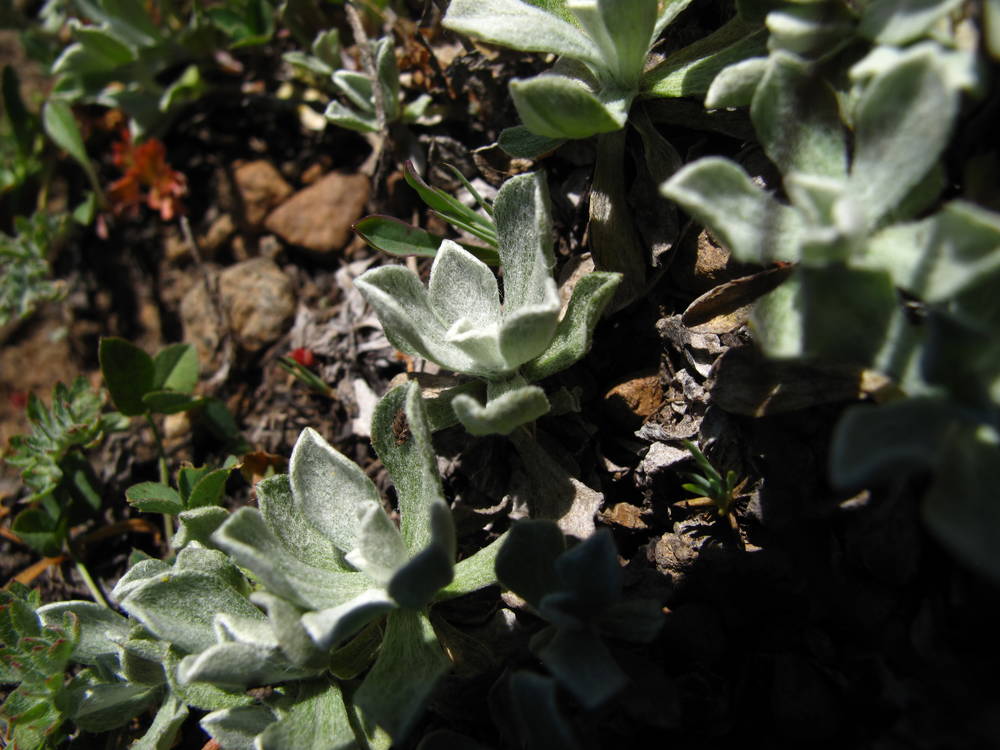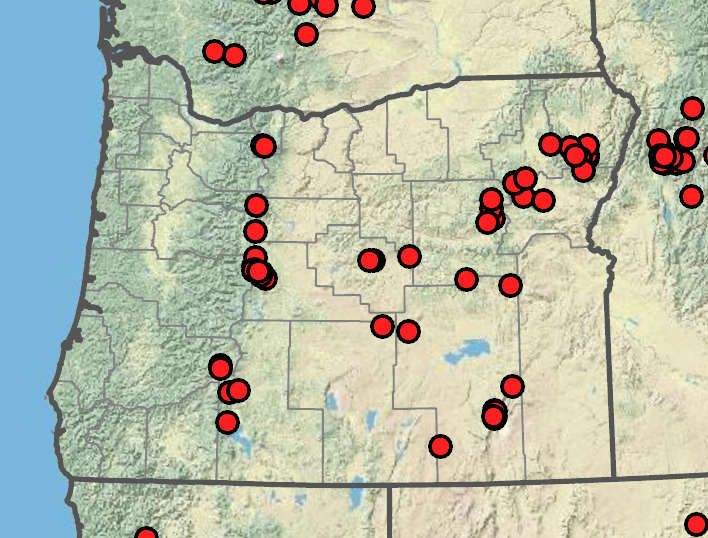Antennaria microphylla
(synonym of Antennaria rosea)
Antennaria umbrinella
littleleaf pussytoes, rosy pussytoes
umber pussytoes
5–30 cm, rarely stipitate glandular distally.
7–16 cm, not glandular.
usually forming rosettes, spatulate to oblanceolate, 8–40 × 2–10 mm, 1-veined;
tips mucronate;
surfaces usually gray-pubescent, adaxially sometimes green and glabrous.
usually forming rosettes, narrowly spatulate to cuneate, 10–17 × 2–5.4 mm, 1-veined;
tips mucronate;
surfaces gray-tomentose.
linear, 5–36 mm;
tips acute to subulate, usually not flagged.
linear, 8–18 mm;
tips acute, not flagged.
mostly glabrous to pubescent, staminate heads 4–8 mm, pistillate heads 4–10 mm.
mostly glabrous to pubescent, staminate heads 3–6 mm, pistillate heads 4–6.5 mm.
distally white to yellow, green, red, pink, gray, or rarely brown;
tips rounded to acuminate.
distally white, light yellow, or light brown, often streaked with pink;
tips acute to acuminate.
0.7–1.5 mm, glabrous to papillate.
0.5–1.2 mm, glabrous.
3–20 per stem; in corymb-like arrays.
3–8 per stem; in corymb-like arrays.
=28, 42, 56, 70.
=28, 56.
Antennaria microphylla
Antennaria umbrinella
Rocky areas, meadows, forests, disturbed areas. Flowering May–Sep. 200–3000 m. BR, BW, Casc, CR, ECas, Lava, Owy, Sisk. CA, ID, NV, WA; north to AK, northeast to Greenland, east to NE, southeast to NM. Native.
Here we take a more inclusive approach and include within this species plants that some floras treat as A. rosea.
Sagebrush, coniferous forests, meadows. Flowering Jun–Sep. 1000–2800 m. BR, BW, Casc, Lava. CA, ID, NV, WA; north to British Columbia, northeast to Saskatchewan, east to WY, southeast to AZ. Native.
Katie Mitchell, Stephen Meyers
Katie Mitchell, Stephen Meyers
- Local floras:
BC,
CA,
OR,
WA
- Local Web sites:
CalFlora,
CalPhotos,
Flora NW,
PNW Herbaria,
Turner Photog.
WildflowerSearch
iNaturalist (observations)
USDA Plants Database
- LBJ Wildflower Center
- SEINet
- Plants of the World Online
- Encyclopedia of Life
- Wikipedia
- Google Image Search





